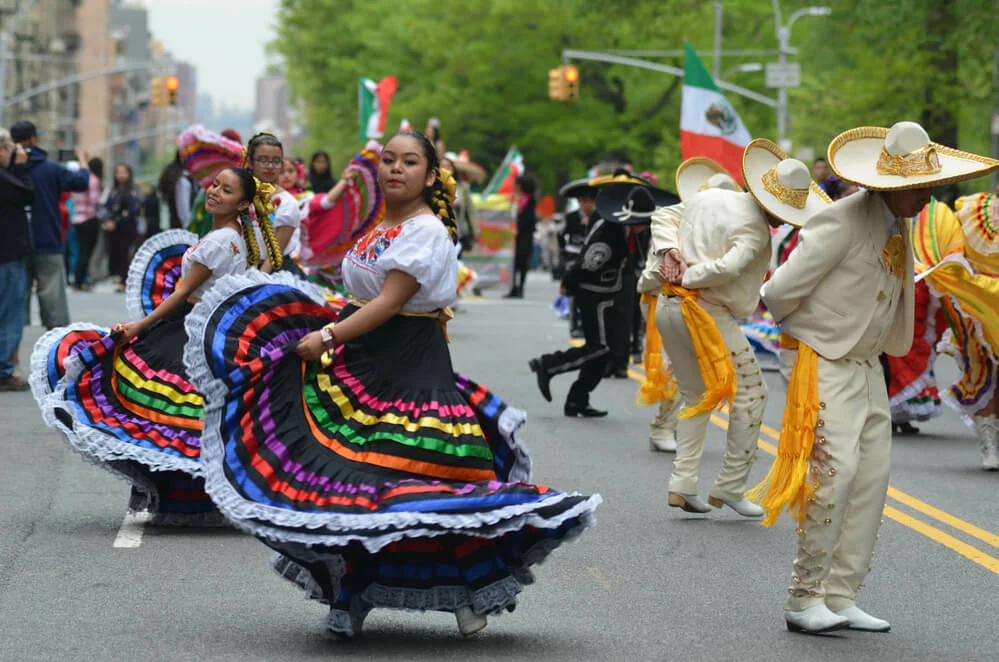Beyond Tacos and Tequila: Unveiling the True Story of Cinco de Mayo

Cinco de Mayo, the “Fifth of May,” is a vibrant celebration synonymous with parades, mariachi music, and mountains of delicious Mexican food. But for many in North America, the historical significance of this day remains shrouded in confusion. Let’s separate the festive facade from the historical facts and explore the true story behind Cinco de Mayo.
A Nation in Turmoil: Mexico’s Financial Struggles
To understand Cinco de Mayo, we must travel back to the mid-19th century. Mexico, newly independent from Spain, was grappling with financial instability. Years of war and political upheaval had left the treasury depleted.
In 1861, newly elected president Benito Juárez, a reformer and lawyer of Indigenous Zapotec descent, made a bold decision. He declared a temporary suspension of debt repayments to European powers, including France, Britain, and Spain.
The French Intervention: An Empire’s Ambition
European nations saw this as an opportunity to exploit Mexico’s weakness. Napoleon III of France, harboring dreams of establishing a French colony in North America, dispatched troops to Veracruz, Mexico, demanding repayment.
Britain and Spain, initially hesitant, eventually withdrew their forces after negotiations with Mexico. However, France remained determined. They saw an opportunity to install a puppet government favorable to French interests.
The Battle of Puebla: A David vs. Goliath Moment
On May 5, 1862, a poorly equipped and outnumbered Mexican force, led by General Ignacio Zaragoza, faced a well-armed French army near the city of Puebla. Many expected a swift French victory.
However, in a remarkable display of courage and resilience, the Mexican army, comprised mostly of indigenous soldiers and citizens, defeated the French at the Battle of Puebla. This unexpected victory became a symbol of Mexican resistance against foreign intervention.
Beyond the Battle: A Broader Legacy
While the Battle of Puebla was a significant victory, it did not mark the end of the French intervention. The war dragged on for several more years before Mexico finally emerged victorious in 1867.
Cinco de Mayo, therefore, commemorates more than just a single battle. It represents:
- Mexican resilience: The victory at Puebla stands as a testament to the Mexican people’s unwavering determination to defend their sovereignty.
- Indigenous pride: General Zaragoza’s leadership and the participation of indigenous soldiers highlight the important role of Indigenous communities in Mexican history.
- A symbol of defiance: Cinco de Mayo signifies Mexico’s refusal to bow to foreign domination.
From Mexico to North America: The Evolution of a Celebration
In Mexico, Cinco de Mayo is a relatively minor holiday. However, in the United States, particularly in areas with large Mexican-American populations, Cinco de Mayo has evolved into a vibrant celebration of Mexican culture and heritage.
This shift began in the early 20th century, fueled by Mexican immigrants working in the United States who used Cinco de Mayo as an opportunity to showcase their culture and identity. Over time, the celebration expanded beyond its historical roots, incorporating elements of Mexican cuisine, music, and dance.
Cinco de Mayo Memes and Modern-Day Significance
The rise of social media has further propelled Cinco de Mayo into the pop culture spotlight. Cinco de Mayo memes, often humorous and lighthearted, have become a mainstay of online discourse.
However, amidst the festive atmosphere, it’s crucial to remember the historical significance of Cinco de Mayo. It serves as a reminder of Mexico’s rich history and the importance of fighting for national sovereignty.
Celebrating with Understanding: Respecting the Roots
As you partake in Cinco de Mayo festivities, take a moment to reflect on the day’s historical context. Enjoy the delicious food, vibrant music, and rich cultural traditions. But remember, Cinco de Mayo is more than just a reason to break out the margaritas — it’s a celebration of Mexican resilience and a testament to the enduring power of national pride.





